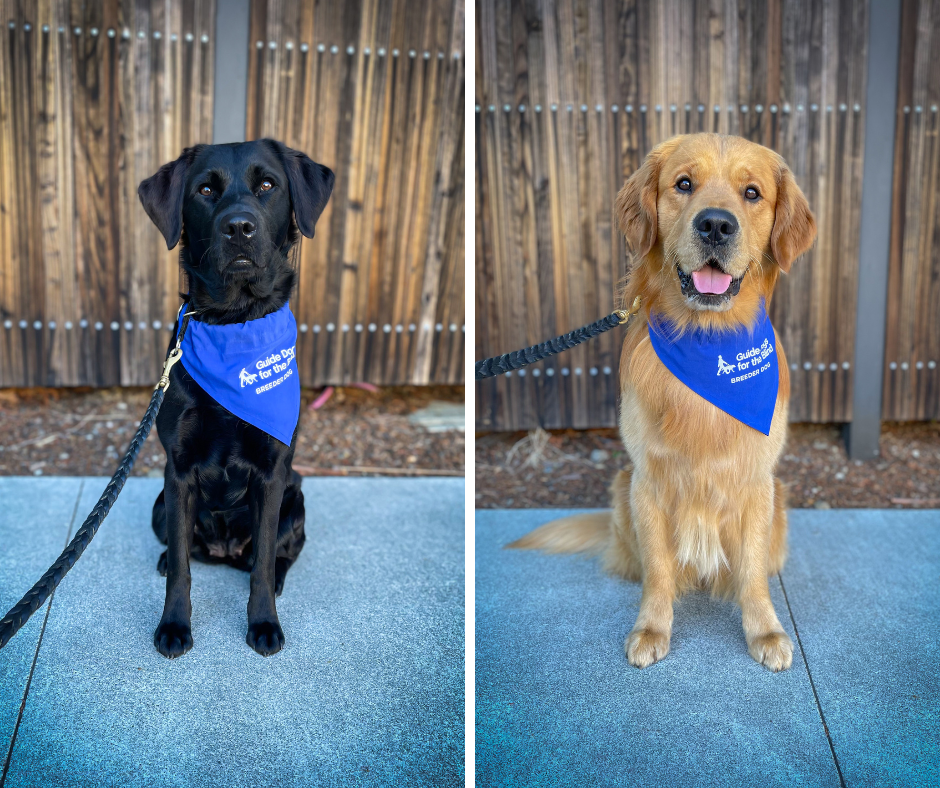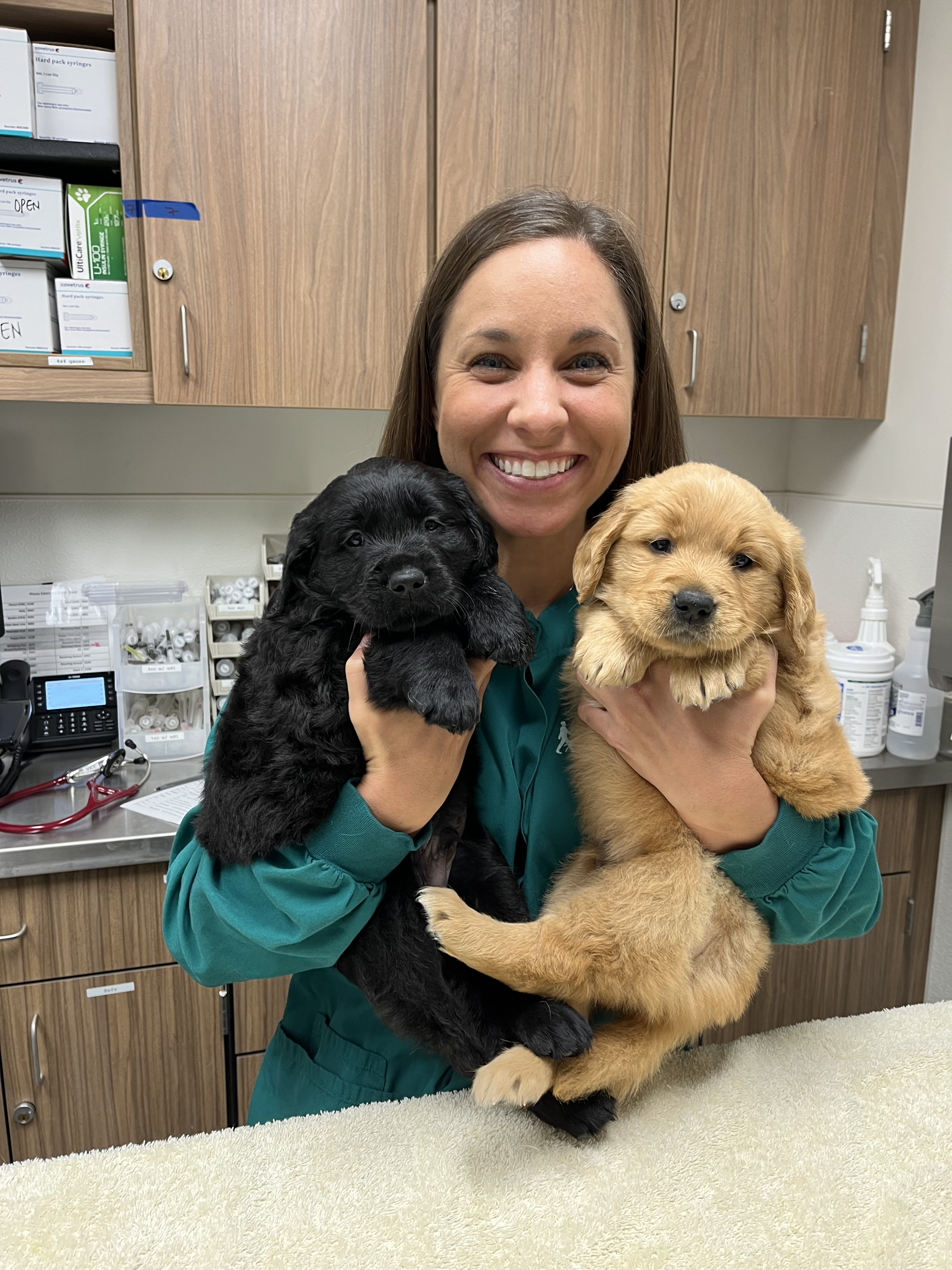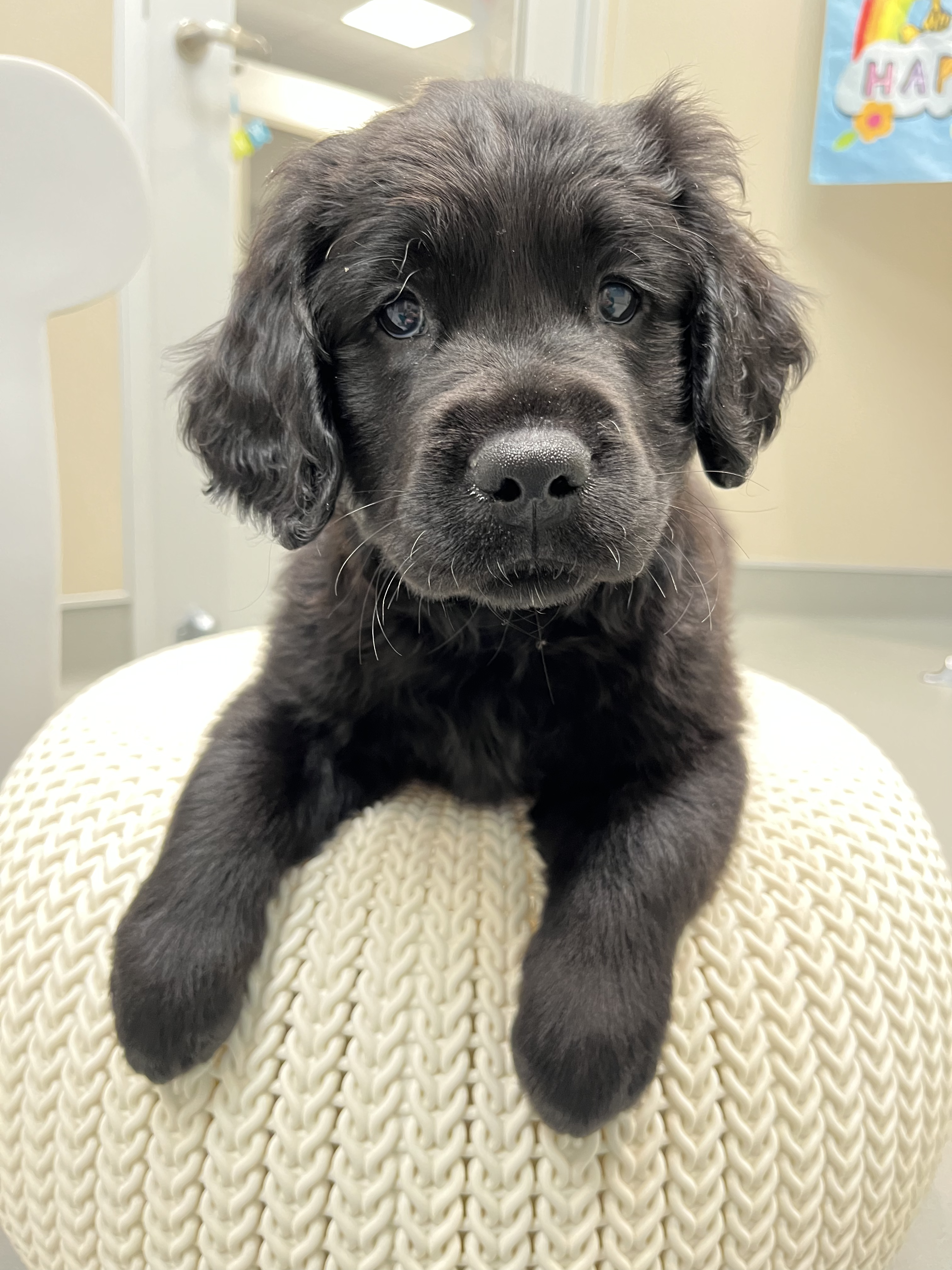GDB recently welcomed into the world a unique long-coated Labrador/Golden Retriever cross puppy named Neutrino. What makes this adorable pup so distinctive? He is GDB’s first long-coated puppy that is black in color! We are so excited to share some details about just how unique he is for our dog population.
Guide Dogs for the Blind makes breeding selections based on the highest potential that the resulting offspring will succeed as working guide dogs. At the same time, we try to provide our clients with the opportunity to satisfy personal preferences they may have regarding breed, color, or gender of the dog they are paired with. While the greatest proportion of graduating dogs at GDB are Labrador Retrievers (black, yellow, and occasionally chocolate), GDB also graduates Golden Retrievers and Labrador/Golden cross breeds. GDB first introduced Lab/Golden cross dogs into our program in the mid-1990s and quickly realized the benefits to the health and success of our dogs by bringing together the genetic traits of these two breeds.
So what does this all have to do with a long-coated black puppy? To understand how this puppy came to be, we need to review some basic genetic principles.
Genes are a set of instructions, contained within an animal's DNA, which determine what traits are inherited and the appearance of the animal, known as phenotype. Each gene has two copies which are inherited (one from each parent). There are lots of genes which determine coat length and color in dogs, and many types of inheritance patterns that determine appearance.
The most common is a dominant/recessive relationship. A gene copy is said to be dominant when it effectively overrules the other (recessive) gene copy. Genes that determine the length of a dog’s coat generally have a simple dominant/recessive relationship: short is dominant and long is recessive.
This means a long-coated breed like a Golden Retriever has two copies of the long coat gene while purebred Labradors have two copies of the short coat gene. In the case of Labrador/Golden crosses, there are some additional considerations.
Since puppies inherit one gene copy from each parent this means the first generation of a Lab and Golden pairing will result in all puppies inheriting one copy of the short-coated gene from the Lab and one copy of the long-coated gene from the Golden. Because the short-coated gene is dominant, all puppies will have a short coat but carry the gene for a long coat.
Now imagine one of those short-coated Lab/Golden cross puppies grows up and becomes a GDB breeder dog. If that dog is bred to a Golden, then all puppies in the resulting litter will inherit one copy of the long-coated gene from the Golden parent. But the short-coated genes will be randomly assigned: some puppies will inherit the copy of the short-coated gene, while others will inherit the copy of the long-coated gene. This means we can have both short-coated and long-coated puppies in the same litter!
In the case of Neutrino, our long-coated black puppy, we have to add color into the mix as well. Goldens are all yellow while Labs can be black, yellow, or occasionally chocolate. GDB has occasionally had female black Lab/Golden cross dogs in our breeder population including a dog named Napoli. Napoli’s dad is a black Lab and her mom is a yellow short-coated Lab/Golden cross. Napoli has a short coat and we knew she could only inherit a copy of the short-coated gene from her dad, but what we didn’t know is whether she inherited a copy of the long or short-coated gene from her mom. For Napoli’s first litter we matched her with a lovely male Golden, Brewster, who complemented her health and temperamental traits. And then we waited… We knew there were many possibilities for color and coat length that would be determined by Mother Nature’s roll of the genetic dice.

Napoli’s eight puppies were born on September 15, 2022 and all were yellow except for one male – Neutrino. We had to wait several weeks for the pups’ hair to grow long enough for us to determine their coat lengths. By 4 weeks of age, it was clear that four puppies would have short coats and four would have long coats – including Neutrino, to our delight!
It is important to note that the selection factors to become a GDB breeder dog are based solely on health and temperament traits rather than appearance, and the same is true when choosing pairings between males and females. We are always focused on breeding healthy dogs who will become working guides or K9 Buddies. So, while it is less likely, it is certainly possible that we will continue to occasionally see chocolate Labs, black Lab/Golden crosses, and now long-coated black Lab/Golden crosses, when the ideal matchup includes these possibilities, and all the genetic stars align.

If you’re interested in learning more about coat type and color genetics you might enjoy our Breeding Department’s favorite website: Dog Coat Colour Genetics (UK).
In the meantime, welcome Neutrino! We can’t wait to see where your journey leads!
Learn more about GDB's world-class breeding program today and how you can sign up to be a Breeder Custodian or Volunteer Puppy Raiser!




